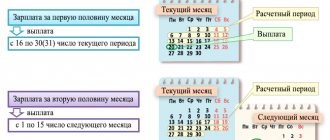About OT knowledge
First you need to have an idea of what labor protection is in enterprises and organizations. The regulations are clear on the definition. In plain language, this is a set of measures aimed at preserving the health and even the lives of employees during their work activities.
It turns out that, one way or another, OT is an integral part of the technological process. The fact is that when performing certain operations, it is necessary to maintain safety in the workplace in order to avoid injury or prevent the occurrence of an occupational disease.
When appointed to a position, a manager must know all the requirements relating to this area, that is, he must undergo training and be certified. This will confirm that he knows about health and safety to the required extent and will be able to solve the assigned tasks.
What is certification
Before passing certification in the field of labor protection, you must:
- Complete a 40-hour training program. The training is conducted by a specialist who has the right to conduct training. The training is organized by a specialized training center.
- After completing the study, it is necessary to evaluate how the material has been learned. For this purpose, questions are prepared and compiled into tickets. Next, the employee’s knowledge is tested by a commission.
- Based on the decision of the commission and upon successful passing of the exams, a protocol is drawn up, which reflects information that the employee has been certified.
- Based on the protocol, a certificate is issued with a record of completion of training and knowledge testing in occupational safety.
About types of certification
There are three types of occupational safety certification for workers.
| View | Description |
| Primary | Conducted within the first month from the date of appointment of the employee to the position. This kind of certification is organized through preliminary training of employees, and it all starts with training followed by testing of knowledge. Knowledge is checked by a commission headed by the chairman, and those participating in the examination must have in their hands an OT certificate for the right to be members and chairman of the AC. |
| Periodic | It is carried out at a given frequency; as a rule, it is planned after three years. That is, it turns out that if the certification deadline is 03/02/2014, then the next deadline is 03/02/2017 and no later. If the certificate indicates the deadline for certification, and for some reason the employee did not pass the scheduled knowledge test in a timely manner, then this is accordingly considered a violation and may be punished by supervisory authorities. |
| Unscheduled | It is not planned, but it makes sense to talk about it in more detail. |
All types of certification are regulated by regulatory documents.
How often and for how long
Scheduled inspections of employers, depending on the risk category assigned to their activities, are carried out with the following frequency:
- for the high-risk category - once every 2 years;
- for the significant risk category - once every 3 years;
- for the medium risk category - no more than once every 5 years;
- for the moderate risk category - no more than once every 6 years.
In the absence of a decision to classify the activity of a legal entity or individual entrepreneur into a certain risk category, it is considered to be classified as low risk.
in relation to a legal entity or individual entrepreneur whose activities are classified as low risk .
Scheduled inspections can be carried out in the form of documentary or on-site inspections.
The duration of each scheduled documentary inspection should not exceed 20 working days.
In relation to one small business entity, the total period of scheduled on-site inspections cannot exceed 50 hours for a small enterprise and 15 hours for a micro-enterprise per year.
The duration of an on-site scheduled inspection is calculated from the time actually spent by Rostrud employees directly at the site being inspected, not taking into account the time spent preparing the inspection and processing the results and materials of the inspection.
The Labor Inspectorate may decide to extend the period of the on-site inspection. Rostrud does not have the right to delay the deadline for a documentary check.
About conducting an unscheduled knowledge test
Unscheduled certification is required in the following cases:

When an occupational safety knowledge test is carried out unscheduled
- If an unforeseen incident occurs during work, including an accident. For example, at the site, one of the employees received an industrial injury and, based on the results of its investigation, it was found that he was not promptly instructed, then one of the important activities is an unscheduled test of his supervisor’s knowledge of occupational safety. That is, a special commission is created for these purposes.
- If the employee is planning to be promoted. A vacant position is never unclaimed and, as a rule, a manager from a lower position is appointed here. In this case, an unscheduled knowledge test is required, despite the fact that the specified period for knowledge testing has not expired.
- In case of a violation of the technological process, which as a result led to an incident, that is, caused a danger, but did not lead to injury or other unpredictable circumstances.
- If an employee violated health and safety requirements, although this circumstance did not provoke unpredictable consequences.
Inspection plan
In order to optimally use labor, material and financial resources involved in the implementation of state control, reduce costs for employers and increase the effectiveness of its activities, Rostrud uses a risk-based approach when planning supervisory activities.
What does it mean? The activities of legal entities and individual entrepreneurs are classified as a certain risk category, depending on which the frequency of inspections is established.
Determination of employers' risk categories is carried out automatically by the planning subsystem of the ACS KND using departmental reports of Rostrud (contain data on injuries and wage arrears), as well as through the system of interdepartmental electronic interaction with the Federal Tax Service (contains data on the number of employees, date of state registration, type of economic activity) .
When forming a draft annual inspection plan, Rostrud ensures:
- priority for inclusion in the annual plan of employers with high and significant risk, as well as employers with the most frequently identified facts of violations of workers’ labor rights, unfavorable working conditions, high levels of industrial injuries and occupational morbidity;
- compliance with the requirements of Federal Law No. 294-FZ, which sets deadlines for conducting scheduled inspections of legal entities and individual entrepreneurs, including those related to small businesses;
- compliance with the procedure for preparing annual plans for conducting scheduled inspections, their approval and submission to the prosecutor's office;
- the inadmissibility of including branches of legal entities as independent objects of inspection into annual inspection plans;
- preliminary consideration of the issue of the actual implementation of activities by employers subject to inclusion in the annual inspection plan, including sending relevant requests.
According to the new regulations, inspection plans for 2021 must be published on the Rostrud website before November 10, 2021.
Let us remind you that previously they were published until December 1st.
Frequency of testing knowledge on labor protection for certain categories of employees
Verification of occupational safety requirements is also necessary for certain categories of workers.
These include:
- Workers of all specialties whose activities are related to narrow areas, for example, with the operation of lifting mechanisms, with pneumatic tools or equipment operating under excess pressure, and others. Periodic certification is carried out once a year, and unscheduled certification can be carried out based on a number of reasons. Since it is not planned, the number of times to test employees’ knowledge is not standardized.
- Certification in occupational health and safety is also necessary for teachers of this discipline, the only difference is that training and certification are carried out in specialized training centers that have a license for this.
- Specialists and employees replacing management during the period of their vacation or other absence from work must also pass a knowledge test.
In other words, knowledge testing and certification in occupational safety and health must be passed by everyone whose work activity is, in one way or another, related to compliance with and knowledge of safety standards.
What Rostrud checks
Rostrud inspectors conduct inspections, both scheduled and unscheduled, guided by the Labor Code of the Russian Federation and Federal Law-294 dated 12/26/08. During the inspection, inspectors may be interested in a wide range of company documents: from constituent documents to local regulations, individual documents regulating the or another area of relationship between the administration and the employee, taking into account the specifics of the company.
On the other hand, nowhere in the labor legislation is there a list of labor documents for legal entities and individual entrepreneurs. Such a list was developed by the practice of control activities carried out by the State Inspectorate. They begin with checking the constituent documents, a certificate of registration with the Federal Tax Service, a certificate of state registration, then the documentation in the field of labor is checked:
- Staffing table, vacation schedule. A must have for all employers.
- Internal labor regulations. A mandatory document for every organization and individual entrepreneur (Articles 189, 190 of the Labor Code of the Russian Federation). The document does not have a strictly established form. Its content: organization of work activities of the company, regulation of the labor process.
- Regulations on remuneration (other similar LNA in the field of labor). Such a document must include a clause on the procedure for indexing wages.
- LNA relating to the processing of personal data of employees (requirements are established by Article 86-88 of the Labor Code of the Russian Federation, Federal Law-152 of 07/27/06).
- LNA related to labor regulation (Chapter 22 of the Labor Code of the Russian Federation).
- Instructions for labor protection (R. 10 of the Labor Code of the Russian Federation).
The inspector may require other documents, taking into account the specifics of the company or the work of individual employees, for example:
- collective agreement (may not be concluded, based on the meaning of Article 36 of the Labor Code of the Russian Federation, is regulated by Chapter 7 of the Labor Code of the Russian Federation);
- shift schedule;
- LNA on business trips (not needed in state, municipal institutions, local government bodies, for others - required to be developed);
- LNA about the traveling mode of work, about dividing the working day into parts;
- LNA on professional training, advanced training, certification, independent assessment of workers’ qualifications;
- agreements on full financial liability, etc.
Employment orders can also be checked (whether the employee was familiarized with it within the prescribed period), other personnel documents, including disciplinary sanctions (their legality is assessed), compliance with the storage of work books (for example, an order appointing someone responsible for maintaining, storing and accounting). Labor protection documents are also checked. They must take into account the specifics of the company's business.
On a note! A list of the most significant violations, according to statistical data from inspections, can be found on the Rostrud website. Most often, inspectors find errors in the execution of employment contracts. The document must meet the requirements of Art. 57 Labor Code of the Russian Federation.
How is the inspection recorded?
After the knowledge test has been passed, it is necessary to formalize it with a protocol.

Drawing up a protocol based on the inspection results
It is recommended to include the following information:
- in the middle of the sheet write the word: “MINUTES”, a little lower to the right write on what date the meeting took place;
- below is the text stating that the commission, consisting of: the chairman (indicate the surname and initials), then the members of the commission (indicate the surname and initials) conducted a knowledge test in the field of labor protection;
- further, a list of persons is indicated: full last name and initials, as well as full position held, unit number;
- the very last column indicates that the employee is certified in occupational safety in accordance with his position;
- the protocol is signed by the commission members and the chairman.







